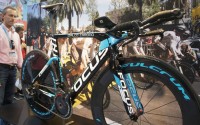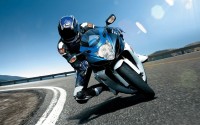How to Choose the Ideal Bike Carrier?
While decent bike trails are dotting all of Australia’s bigger cities and towns (Royal National Park in Sydney, Capital City Trail in Melbourne), you’ll be in the car for a few hours to get to the best the country has to offer. Trails lining the Great Ocean Road and Mount Buller are a 2-3 hours drive from Melbourne and the vivid scenery of Kosciuszko National Park is halfway between Sydney and Melbourne. Getting there rested and ready for a real biking adventure means having your bikes safely attached to your car and on a dedicated bike carrier.
With so many types of bike carriers, choosing what’s right can become a headache. The easy way out is to get answers to a few basic questions, and when that’s done, you’ll be considering pricing and brands. Consider first the type of bikes you’ll be transporting. Full-sized mountain bikes will have more heft to them when compared to road bikes for the same rider. If you’re going on a family trip or with a couple of mates, then carrying more than a single bike will put some strain on carriers not exactly built for the task.

Carriers are divided mainly by the number of bikes they can transport safely and the way they attach to the vehicle. If you already have racks fitted to the roof, then compatible roof carriers are a sensible choice for transporting 2 to 3 lighter bikes. Carriers that are strapped or attached to the boot and trunk are good for carrying a couple of bikes shorter distances.
But for the best in safety, and when there’s the need to lug more than a few bigger bikes, consider getting a tow ball or hitch bike carrier. Of course, you’ll need to have these accessories fitted to the vehicle (most SUVs and utes have them as standard), but the space and versatility are certainly there. You’ll find a 5 bike hitch carrier ready to get all your bikes to where they’re needed with the least fuss. And as a side bonus, hitch bike carriers are some of the easiest and quickest to get bikes on and off the car. So, you’ll be riding in a matter of minutes.
Roof-Mounted Bike Carriers
Roof mount bike carriers attach to most crossbars. Here there are three choices – fork-mounted, frame-mounted, and wheel-mounted roof carriers. Each has its pros and cons. Fork-mounted carriers assume a lower profile by attaching to the front thru-axle or dropout, so require removing the front wheel. The attachment is secure and there’s no contact with the frame if you’re worried about expensive carbon-fibre bikes. Ensure that the rack is compatible with the fork, otherwise, you’ll need to buy separate adapters.
Frame-mounted bikes sit upright on the roof, and are good for a variety of mountain bikes (especially full suspension), but use more of the crossbar space and are higher up, so not perfect for taller vehicles.
Wheel-mounted carriers attach to the wheels, and this is the best option if you don’t want possible damage to expensive carbon frames or forks. They do away with the need for crossbars, instead of relying on suction cups. This, however, limits the number of bikes you can carry.
All roof carriers have a classic look to them, are good for sedans, hatches, and cars sitting lower, and allow uninterrupted access to the boot. The downside is the limited number of bikes they can carry and your roof’s rated carrying capacity.
Hitch-Mounted Bike Carriers
This option is gaining popularity over other bike carriers in that they offer the best versatility, easy access to bikes, and the sheer weight they can take. They do though require you to have a standard receiver hitch at the back. There are two basic designs – platform and hanging hitch carriers.

Both types allow for quicker loading and unloading of bikes since they sit lower, and can be used on a variety of vehicles, even those with higher ground clearance like utes and SUVs. In addition, hitch-mounted carriers won’t impact safety (or damage to bikes) in low clearance areas like garages, and keep the roof and rack free for adding more gear. Cons may include some hassle in getting to the boot, limited visibility to the back, and longer vehicle lengths.
Hanging carriers, like a 5 bike hitch carrier, excel at carrying more bikes (especially when compared to roof carriers), and with a rated 2-inch hitch, bigger and heavier bikes, including e-bikes. They also are the easiest option for lifting bikes on and off the carrier. Newer variants have a pivoting or tilt function that moves away from the vehicle for easier access to the boot. And most come with locks to secure the bikes to the carrier and the carrier to the car.
Platform hitch carriers better separate individual bikes than hanging models, can carry a range of differently-sized bikes, and are generally sturdier and safer. Like hanging variants, you’ll find platform hitch carriers that tilt or fold away from the hatch or boot. Have in mind that advanced features like these can up the price. Also, most models are limited to carrying up to 4 bikes at a time (and 2 max on light-duty hitches).
Both platform and hanging hitch carriers offer better protection for your bikes and benefit from reduced drag, so fuel economy isn’t an issue either. In addition, they can be fitted to most vehicles. Similar variants attach to tow balls.
Trunk/Boot-Mounted Bike Carriers
These are the simplest and cheapest bike carriers and attach to the car with adjustable clamps or straps. They’re quick to get bikes on or off just like hitch and tow bar variants but may not be the best fit for all car designs (think rear spoilers or oversized bumpers) and can damage paintwork if not installed properly. Boot-mounted carriers are good for up to three lighter or smaller bikes, with most variants able to carry up to 40 kilos.

Which Bike Carrier to Go For?
If you need to carry more bikes, at higher speeds and are concerned about damage (both to cars and bikes), then the most sensible choice is a hitch bike carrier. These are better built, can take more weight, and have a rounded set of useful features and accessories. They do require a fitted hitch and regulations in Australia state visible number plates, so you might need additional plate holders. But for the intended purpose, these work best.
Roof-mounted options are ideal for 2-3 bikes, but won’t suit all cars and are more difficult in loading and unloading. Lastly consider boot-mounted carriers when using rentals or aren’t transporting thousands of dollars of sporting gear hanging from a few straps.



